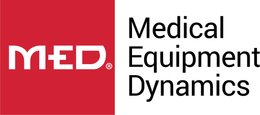The medical equipment industry is undergoing significant changes, driven by supply chain disruptions, evolving technologies, and shifting market demands. As healthcare providers and medical facilities strive to adapt, the ability to navigate these challenges effectively has become crucial. Understanding the trends shaping the industry can help businesses prepare for the future while ensuring the consistent availability of critical medical devices.
The Impact of Supply Chain Disruptions
Global Supply Chain Bottlenecks
The COVID-19 pandemic exposed vulnerabilities in global supply chains, leading to shortages and delays in medical equipment procurement. Even as the world transitions to post-pandemic operations, residual disruptions continue to impact manufacturing, transportation, and distribution. Key issues include:
- Raw Material Shortages – Essential materials like semiconductors, plastics, and metals have experienced supply constraints, slowing production.
- Transportation Delays – Limited freight capacity, increased shipping costs, and port congestion have prolonged delivery timelines.
- Labor Shortages – The healthcare and logistics sectors are facing labor shortages, affecting manufacturing output and timely distribution.
These disruptions have forced healthcare organizations to rethink their procurement strategies, emphasizing resilience and diversification.
Shifting Toward Domestic Manufacturing
To mitigate risks associated with international supply chains, many companies are investing in domestic manufacturing capabilities. By reducing dependency on overseas suppliers, businesses can enhance reliability and control costs. However, challenges such as high production costs and workforce shortages still need to be addressed.
Just-in-Time vs. Just-in-Case Inventory Strategies
Historically, just-in-time (JIT) inventory management has been a standard approach, minimizing storage costs and optimizing supply flow. However, recent disruptions have led to a shift toward just-in-case (JIC) inventory strategies, where businesses stockpile essential supplies to avoid shortages during crises. Striking the right balance between efficiency and preparedness is now a key priority.
Emerging Industry Trends in Medical Equipment
Digital Transformation and Smart Technology
The integration of digital technologies into medical equipment is revolutionizing healthcare delivery. Several innovations are driving this transformation:
- Internet of Medical Things (IoMT) – Connected devices enable real-time monitoring, remote diagnostics, and data-driven decision-making.
- Artificial Intelligence (AI) – AI-powered tools assist with diagnostics, predictive maintenance, and workflow automation.
- Telemedicine Integration – Remote patient monitoring and virtual consultations are becoming standard, requiring advanced medical equipment compatibility.
These advancements improve patient outcomes while enhancing operational efficiency for healthcare providers.
Increased Focus on Sustainability
Sustainability is becoming a top priority in the medical equipment industry. Manufacturers are exploring eco-friendly materials, energy-efficient devices, and sustainable disposal practices. Hospitals and clinics are also prioritizing reusable and biodegradable medical supplies to reduce waste.
Regulatory Changes and Compliance Challenges
The regulatory landscape for medical devices is continuously evolving, with new requirements aimed at improving safety and efficacy. Key developments include:
- Stricter FDA Guidelines – Enhanced scrutiny on medical device approvals and post-market surveillance.
- EU Medical Device Regulation (MDR) – More rigorous standards for device certification in European markets.
- Cybersecurity Regulations – New mandates requiring enhanced security measures for connected medical devices.
Staying ahead of regulatory changes is critical for manufacturers and suppliers to maintain compliance and market access.
Growing Demand for Refurbished Equipment
With rising costs and budget constraints, many healthcare facilities are turning to refurbished medical equipment as a cost-effective solution. High-quality, pre-owned devices offer significant savings while maintaining reliability and performance. As demand increases, the refurbished medical equipment market is expected to expand, creating new opportunities for suppliers.
3D Printing in Medical Device Manufacturing
Additive manufacturing, or 3D printing, is transforming medical device production by offering customization, reduced waste, and faster prototyping. Applications range from patient-specific implants to surgical tools, enabling more precise and efficient treatment solutions.
Adapting to the Future of Medical Equipment Supply Chains
Strategic Supplier Partnerships
To build more resilient supply chains, medical equipment companies are forming strategic partnerships with suppliers. Multi-sourcing strategies, long-term agreements, and closer collaboration help ensure consistent supply and mitigate risks.
Investing in Automation and AI for Logistics
Automation and AI-driven analytics are optimizing supply chain operations. Predictive analytics, robotics, and machine learning improve demand forecasting, inventory management, and order fulfillment, reducing delays and inefficiencies.
Enhanced Inventory Management Systems
Advanced inventory management solutions, including cloud-based platforms and blockchain technology, provide greater visibility and control over supply chains. Real-time tracking and automated reordering systems enhance efficiency and reduce stockouts.
Building Resilience Through Diversification
Relying on a single supplier or region for medical equipment can be risky. Businesses are diversifying their sourcing strategies, exploring alternative markets, and investing in regional distribution centers to reduce dependencies.
Conclusion
The medical equipment industry is navigating a period of rapid change, shaped by supply chain challenges and emerging trends. By embracing innovation, enhancing supply chain resilience, and staying ahead of regulatory changes, businesses can thrive in this evolving landscape. Adapting to these shifts will not only ensure continued access to critical medical equipment but also drive long-term growth and efficiency in the healthcare sector.

